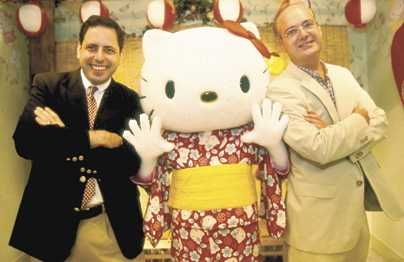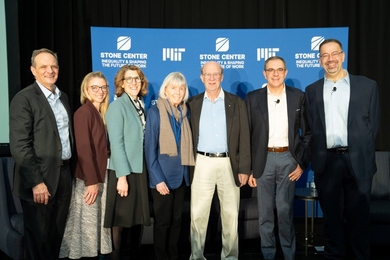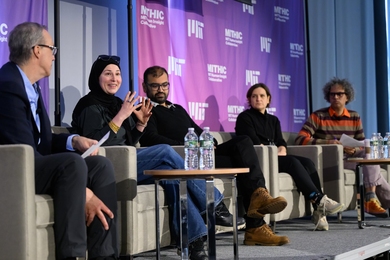When a little white kitten with a big head, a bow on her ear and a blank space instead of a mouth drops a billion dollars on the welcome mat of her parent company, it's not just something the cat dragged in--it's a business phenomenon. And when that kitten celebrates 30 years of dominating the global character-goods market, it's time to ask, what happened?
Enter Ken Belson, business reporter for The New York Times and co-author with Brian Bremner of "Hello Kitty: The Remarkable Story of Sanrio and the Billion Dollar Feline Phenomenon" (Wiley, 2003). Belson gave a talk on Hello Kitty's history and remarkable market trajectory at MIT on Oct. 29 in Room E51-095. The event occurred just three days before Hello Kitty's 30th birthday. The room was packed.
Belson's presentation described the character-goods industry in Japan and the global reach of Hello Kitty products, as well as the personality and business acumen of Shintaro Tsuji, head of Sanrio Co., Hello Kitty's creator. Belson showed slides displaying Hello Kitty's power in her parent company--she brings in 50 percent of its profits--and her evolution as an icon of graphic design over those 30 years.
"The dark secret of the character-goods business is, nobody knows who will succeed," Belson noted. Sanrio maintains Hello Kitty's success by keeping up a quick and constant turnover of Hello Kitty products, adapting and licensing 600 new items each month and removing 600 from circulation, he said.
Hello Kitty items have evolved from the original little pink purse, priced so Japanese children could buy it with their own money, to products that teeter on parody. These include the Hello Kitty toaster, the Hello Kitty robot, the Hello Kitty beaujolais, the Hello Kitty debit card and the online Hello Kitty stress test. (To take the stress test, visit sanriotown.com on the web.)
Hello Kitty herself hasn't changed much, and Sanrio has kept her life story the same. She was born in London Nov. 1, 1974. Her last name is White. She weighs as much as three apples and she has a twin sister, Mimmy. Her boyfriend, Dear Daniel, has far less presence than Barbie's Ken, but then, Barbie is 15 years older. For Sanrio, which actually manufactures no products, anything that carries Hello Kitty on it must project "safety, purity, happiness and goodness," Belson said. Hello Kitty is the child ambassador of UNICEF.
Hello Kitty in danger
Belson described Hello Kitty's celebrity as producing the sort of problems any rock star endures. She has enemies; not all groups are vulnerable to the queen of cute, Belson noted. "Kitty Defilers" include feminists and performance artists who find the character ageist and subversive, anti-consumerist groups who accuse Sanrio of making worthless junk, and Taiwanese and Korean nationalist groups who resent cultural exports from Japan for historical reasons, he said.
And that major cute power faces other mortal dangers, Belson noted. One is "brand fatigue," which Sanrio battles relentlessly by its whirlwind licensing schedule. Another is piracy. Yet another danger inheres in demographic changes inside Japan, where the high school population has dropped 25 percent since 1990.
Yet Hello Kitty prevails, her power undimmed by time or competition from newer collectibles such as Pokemon. Once the crowd in E51-095 had settled in, Belson displayed a slide of the original white-faced kitten alone on the screen. Seventy-five adults sighed in unison, just as they would for a baby.
A version of this article appeared in MIT Tech Talk on November 3, 2004 (download PDF).






